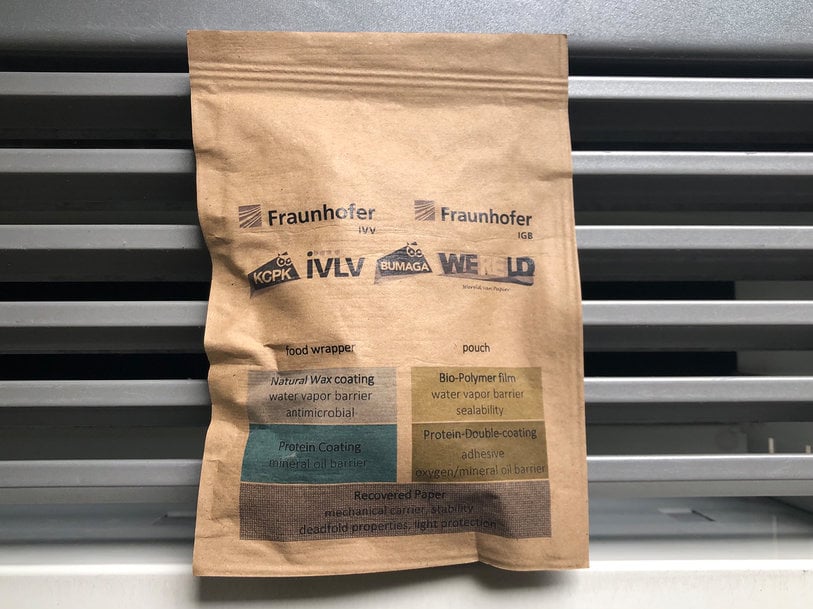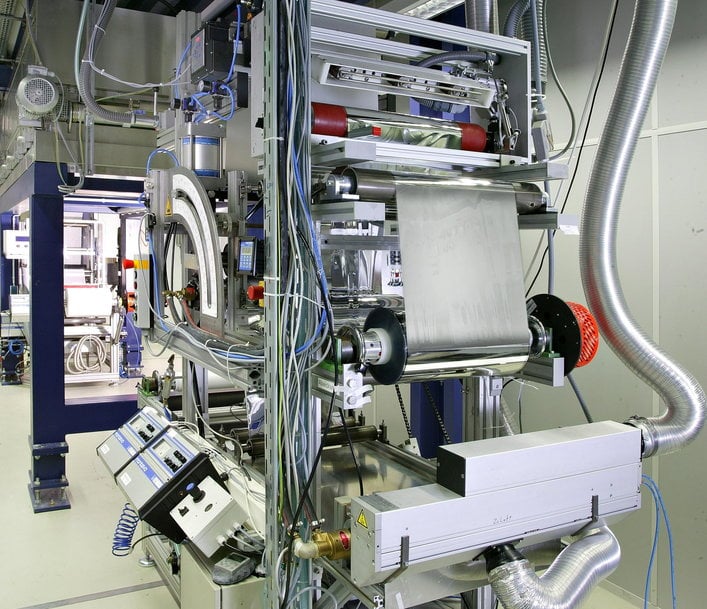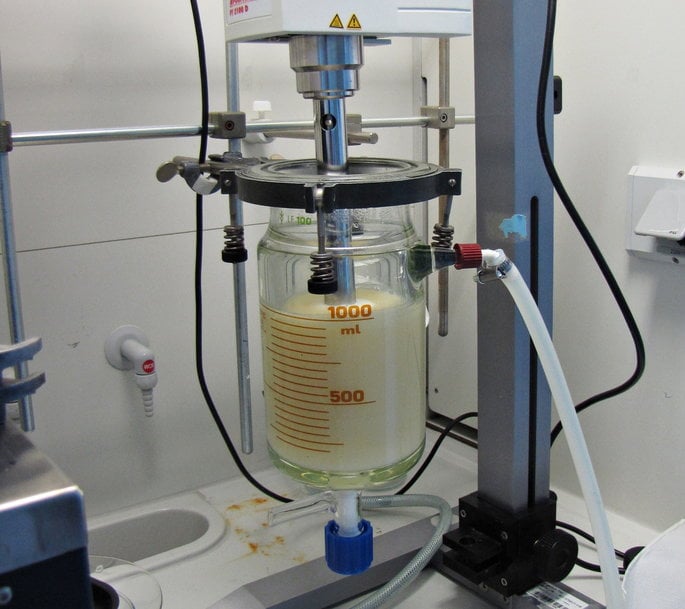www.industry-asia-pacific.com
17
'21
Written on Modified on
Bioactive paper coatings to replace plastic for packaging foods
The amount of plastic waste increases every year. Some of this waste is due to plastic packaging used to protect food.

As part of the “BioActiveMaterials” project, researchers at the Fraunhofer-Gesellschaft have developed an eco-friendly coating for paper packaging. With this, not only is plastic saved, but the coating of plant-based proteins and waxes also extends the shelf life of the food. After use, the packaging can be placed in the waste paper recycling bin for disposal.
Nowadays, those who shop for food in discount stores will almost always be buying plastic packaging as well. The vast majority of sausage, cheese, meat and fish is pre-packed. Fresh fruit, salad and vegetables too often come in plastic packaging. This method is hygienic and protects the food on its journey to the home. However, mineral oil-based plastics are contributing to the growing waste mountain. In Germany, a total of 38.5 kilograms of plastic packaging waste per capita was generated in 2017 alone.
This plastic waste floats on the oceans or is exported to Asian or African countries for disposal. Exposed to environmental factors, these large plastic items break down into microplastics, which eventually make their way into the food chain. Reducing plastic packaging in the food sector as well, then, is a matter of necessity.
The Fraunhofer Institute for Process Engineering and Packaging IVV and the Fraunhofer Institute for Interfacial Engineering and Biotechnology IGB have now presented an innovative and sustainable solution for food packaging. Just as with conventional packaging, it keeps the food fresher for longer. The new packaging, though, involves no plastic whatsoever. After use, it can be recycled without a problem.

In the coating process, the paper is guided over rolls and provided with the “BioActive Materials”. These are supplied in the form of an aqueous dispersion.
Proteins, waxes and antioxidants extend the shelf life of the food
In the “BioActiveMaterials” project, the researchers use paper as the base material for producing typical and functional packaging materials: resealable bags or wrapping paper. The paper is provided with a special coating using standard processes. The researchers make this coating from proteins and waxes with biobased additives. The special formulation of this coating, which offers long-term stability, performs several functions at the same time. “First, the proteins act as an oxygen barrier layer while the waxes form a water vapor barrier, preventing fruit, for example, from drying out quickly.
Second, the biobased additives have an antioxidative and antimicrobial effect. This stops meat and fish spoiling as quickly. Overall, the food has a much longer shelf life,” explains Dr. Michaela Müller, Head of the Functional Surfaces and Materials Innovation Field at Fraunhofer IGB. The proteins in the coating also play specific roles. They prevent mineral oil permeation from the paper to the food. Recovered paper in particular contains residues of mineral oil-containing printer’s ink.
The coated papers developed as part of the “BioActiveMaterials” project are an alternative to the packaging currently used for all kinds of food, no matter whether fruit and vegetables, meat and fish, cheese or even confectionery. Consumers can store and handle the paper-packed foods in exactly the same way as the food packed in plastic today. “Our paper-based packaging is also suitable for goods that have to be chilled, meat for example. The anti-oxidant function remains,” adds Müller. This packaging can even be used for frozen foods. “After use, the packaging is placed in the waste paper recycling bin, the coating is biodegradable and does not impede the recycling process,” says Dr. Cornelia Stramm, Head of Department at the Fraunhofer Institute for Process Engineering and Packaging IVV.
The Fraunhofer Institutes have pressed ahead with the project in close-knit teams. While the scientists at Fraunhofer IGB have taken care of the complex formulation and production of the coating, the researchers at Fraunhofer IVV were testing how well the coating works in practice. “We have tested, for example, how effectively the coating protects the food against external influences such as water vapor, oxygen and mineral oil”, explains Stramm. The team at Fraunhofer IVV also made sure the coating was capable of being applied to the paper using roll-to-roll technology. This is done using a machine on which the paper is guided over rolls. The coating is applied as an aqueous dispersion.

Proteins from waste materials, waxes from Brazil and North Mexico
When selecting the raw materials for the “BioActiveMaterials” project, the team chose natural substances approved for use in the food industry. For the protein element, for example, they experimented with rapeseed, lupins, whey or sunflowers. In practice, agricultural operations could deliver unused waste materials from production to the packaging industry. Turning to the waxes, the researchers went for beeswax and wax produced from the candelilla bush native to northern Mexico and from the Brazilian carnauba palm. “We decided on these waxes because they are biodegradable, approved for food contact and readily available on the market,” explains Müller.
Conventional laboratory techniques, such as crushing, heating, agitating and mixing, are employed in production. “The skill is in the mixing ratio and the sequence in which the individual substances are added. The flexibility with the ratio when mixing the different substances also allows us to optimize the coating for specific applications,” says Müller. Packaging for meat, for example, containing more antioxidants, could have a particularly strong antimicrobial and antioxidative effect, whereas a wax coating protects salad packed in a pouch especially well against drying out.
Advantages for producers, retailers and consumers
The researchers have even thought of the very practical aspects. The bioactive coating can be used for cardboard as well as paper. And printing on the packaging is no problem either. A producer could print on their logo or the nutrition information required under food law. Discount stores and food retailers will also benefit from the Fraunhofer packaging. Because consumers are following the trend towards resource-efficient, biodegradable and plastic-free packaging.
The project partners at Fraunhofer IVV and Fraunhofer IGB are already experimenting with concepts for applying the coating directly to foods such as fruit or vegetables, thereby extending their shelf life. Edible coatings are harmless to health by their very nature.
www.fraunhofer.de

